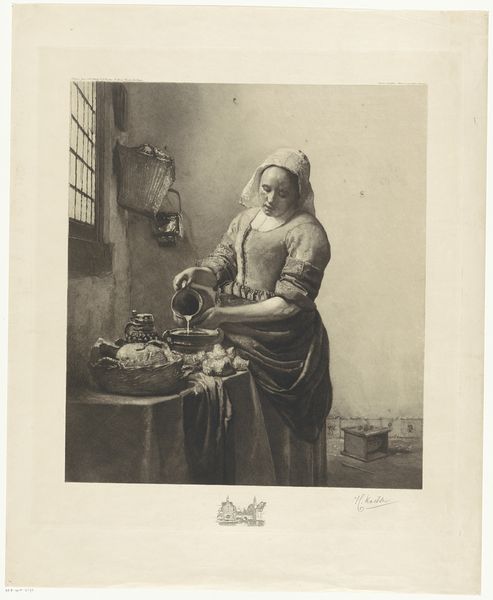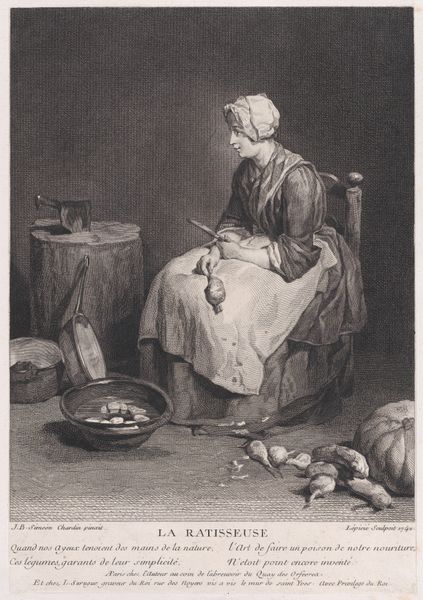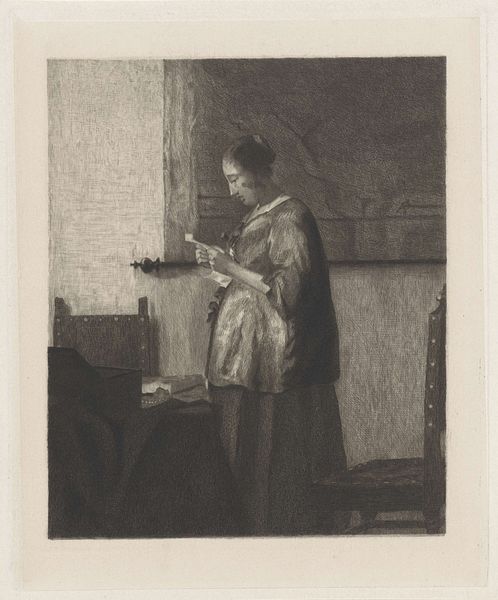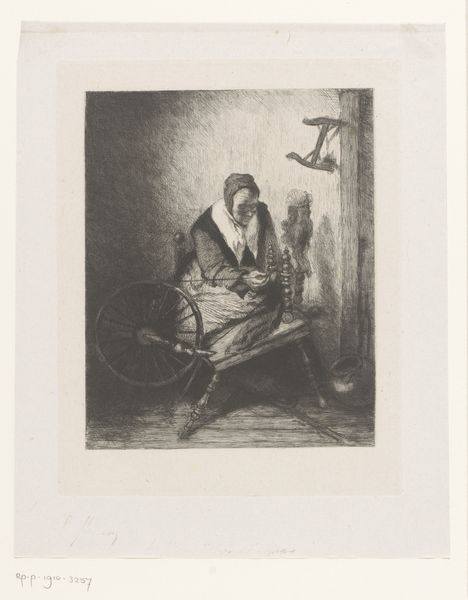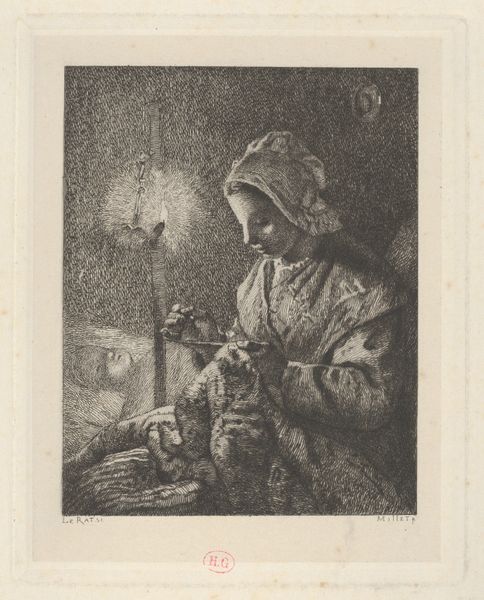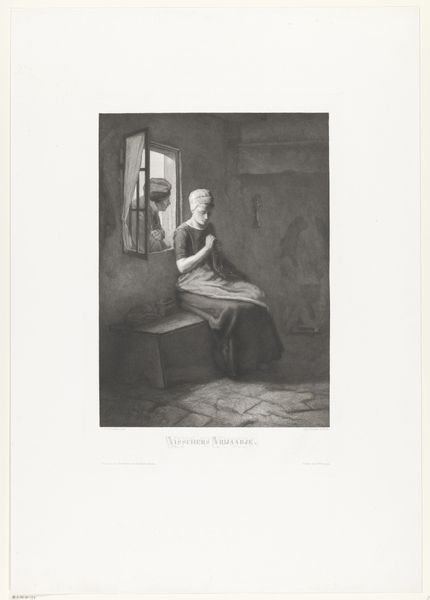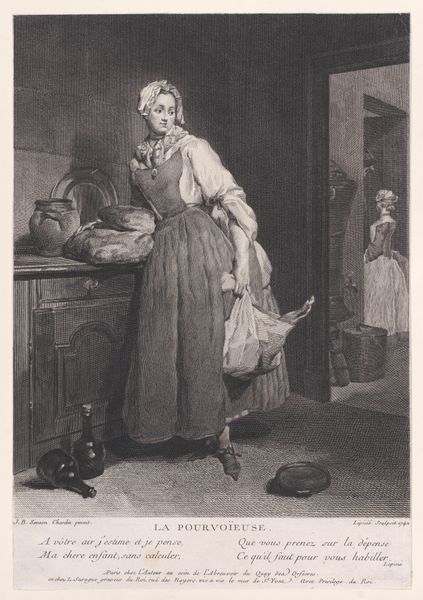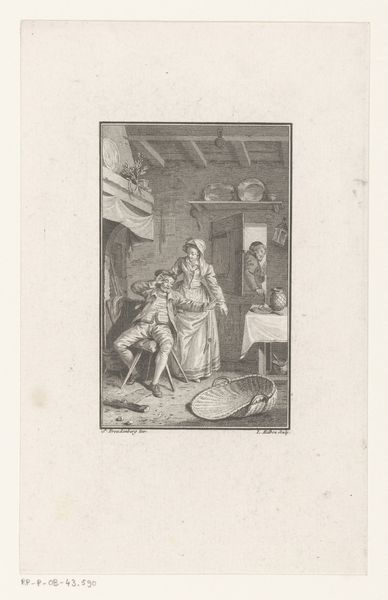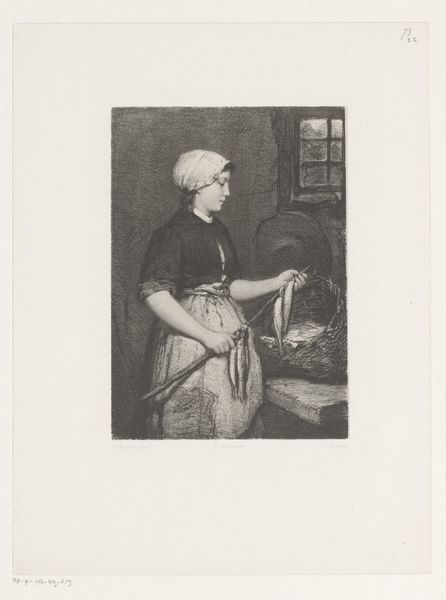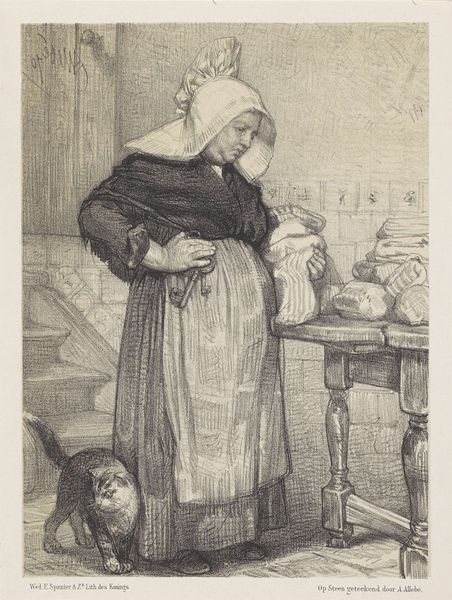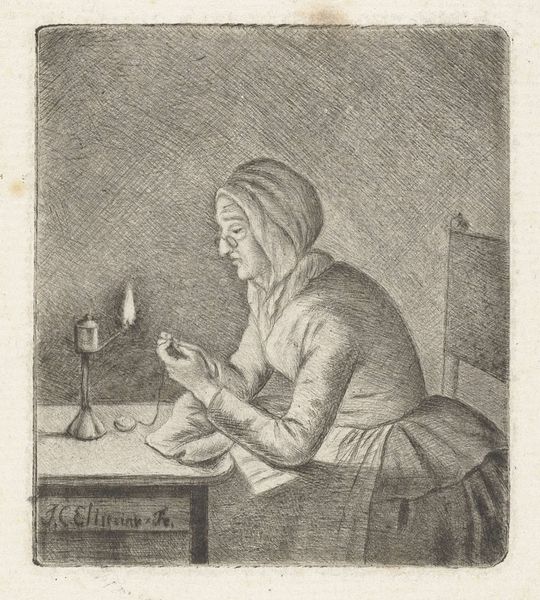
#
photo of handprinted image
#
picture layout
#
light pencil work
#
photo restoration
#
wedding photography
#
expressing emotion
#
couple photography
#
strong emotion
#
photo layout
#
celebration photography
Dimensions: height 256 mm, width 176 mm
Copyright: Rijks Museum: Open Domain
Editor: Here we have "The Milkmaid," printed sometime between 1823 and 1900, after an original by Vermeer. It's printed, seemingly handprinted, judging by the linework, after an oil painting. It has an incredible stillness to it, a quietness achieved through meticulous shading and attention to everyday detail. What stands out to you? Curator: Oh, that quietness is a siren song, isn't it? I'm drawn in by how an image so firmly rooted in the ordinary, pouring milk, manages to feel, well, holy. The light from that unseen window… it doesn't just illuminate; it almost seems to bless the scene. Does it not strike you how this "everydayness" becomes a subject worthy of timeless contemplation? What does "home" or "peace" or "daily work" *mean*, after all? Editor: I see what you mean, the way light and shadow emphasize this… almost sacred quality in something mundane. It’s incredible, really. And it is strange to see daily activities as holy now that you mention it. Do you think it reflected anything specific about the world the original artist inhabited, or maybe even this printmaker? Curator: Absolutely. Imagine a world where images weren't instant, where every line was carefully considered, every shadow painstakingly rendered. Wouldn't that imprint a certain… reverence? Kaiser, the printmaker, is not merely replicating Vermeer; he is mediating it for another audience, one perhaps even hungrier for glimpses into this serene domesticity. This isn't just "a milkmaid," but a representation of human worth, of the dignity in simplicity. It's a world away from, say, courtly portraiture of that time. Does this not feel different somehow, more…intimate? Editor: Definitely, seeing it as this 'mediat[ed] reverence' helps to clarify both the context of the printer, as well as the context of the painting’s reproduction. It has something more, you’re right. It makes the milkmaid's work almost iconic. Curator: Right? Perhaps our lives need that careful attention too. Makes you almost want to give thanks for the quiet act of, say, brewing a cup of coffee. Editor: I know, right? This really transformed how I look at a ‘simple’ subject now.
Comments
No comments
Be the first to comment and join the conversation on the ultimate creative platform.
